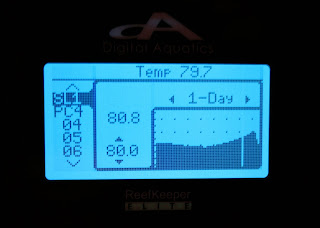The latest coral hype has to do with Acanthastrea lordhowensis. Prices seem to be driven by artificial hype and, of course, demand in this hobby. How this is truly controlled or deemed fair in the coral market, no one can be sure. A great article describing the Acan phenomenon can be found in Reef Keeping magazine.
After lurking on the San Diego boards, I finally took the plunge and ordered up four headed frags of 5 color types and was just in time for the bonus frag offer at Fish n'Frags. This local San Diego startup knows how to post up the eye candy on their website. After placing my order, I was a little skeptical of what I would actually receive because their posted images were so colorful, vivid and crisp. Would it be genuinely "WYSIWYG"?
After lurking on the San Diego boards, I finally took the plunge and ordered up four headed frags of 5 color types and was just in time for the bonus frag offer at Fish n'Frags. This local San Diego startup knows how to post up the eye candy on their website. After placing my order, I was a little skeptical of what I would actually receive because their posted images were so colorful, vivid and crisp. Would it be genuinely "WYSIWYG"?


I currently have them on a black frag rack that I purchased from a fellow on SDMAS. The magnets holding the black egg crate rack have been dipped in a resin which protects from salt water corrosion. The white egg crate is there temporarily because I had them situated in the refugium for a while.
You can see the exposed skeleton underneath where the frags were cut (with some sorta precision jigsaw tool?!) from the mother colony. That's what builds a reef!
Now I just need to head over to Home Depot and purchase some special glue and figure out where the heck I'll be placing these in my main tank. I'm having a hard time figuring out which ones I like the best; it affects their strategic placement in the tank.
You can see the exposed skeleton underneath where the frags were cut (with some sorta precision jigsaw tool?!) from the mother colony. That's what builds a reef!
Now I just need to head over to Home Depot and purchase some special glue and figure out where the heck I'll be placing these in my main tank. I'm having a hard time figuring out which ones I like the best; it affects their strategic placement in the tank.









































